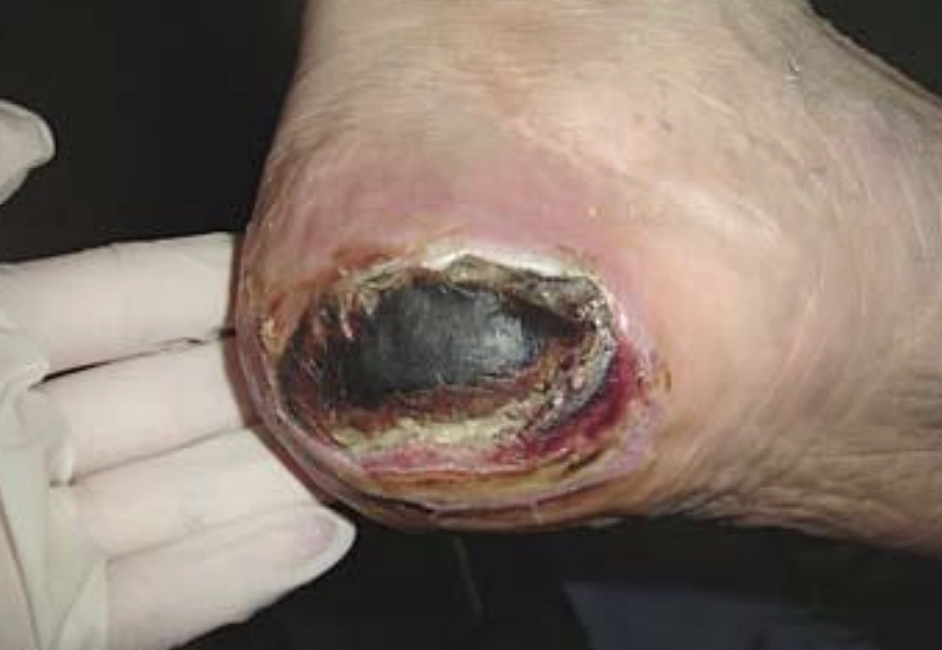pressure injury
1/62
There's no tags or description
Looks like no tags are added yet.
Name | Mastery | Learn | Test | Matching | Spaced |
|---|
No study sessions yet.
63 Terms
pressure injury
localized damage to skin and underlying soft tissue usually over a bony prominence or related to medical of other device
intact skin or an open ulcer
pressure injury can present as ___
intense, prolonged; shear
pressure injury occurs due to ___ and/or ___ pressure or pressure in combo w/ ___
National Pressure Ulcer Advisory Panel (NPUAP)
authoritative voice on pressure injury prevention and treat in US
pressure injury
term that better reflects the etiology of wound (old terms: bed/pressure sores; decubitus ulcers)
critical care, SC injury, acute pediatric, CV, neonatal pts
pressure injury incidence: 2x as likely in ___ units; increased likelihood w/ (4)
11 billion; 1200, 70,000
pressure injury cost: $___ in hospital costs in 2006; avg $___/day in hospital costs; management of a single full thickness pressure ulcer = $___
mechanical, ischemia
pressure injury formation results from ___ injury to skin causing subsequent ___ to underlying structures
ischemia, impaired lymphatic flow, reperfusion, tissue deformation
4 proposed underlying mechanism of pressure injury
ischemia
due to capillary occlusion
impaired lymphatic flow
causes an increased accumulation of metabolic waste products in area
reperfusion
due to inflam response that ensues after return of blood flow to ischemic area
local hyperemia, ischemia, necrosis, ulceration
4 stages of pressure wound formation
local hyperemia
clinical presentation: observed w/in 30 min of consistent pressure
local hyperemia
increase in blood flow
local hyperemia
clinical presentation: redness to area up to 1hr after pressure relieved
ischemia
clinical presentation: 2-6hrs of continuous pressure
ischemia
clinical presentation: erythema presents as deeper red color
necrosis
clinical presentation: 6hrs after continuous pressure
necrosis
clinical presentation: skin color vary from greyish to blueish w/ induration/hardness noted w/in tissue
ulceration
clinical presentation: 2 wks after necrosis has been observed
staged wounds
only type of wounds caused by pressure
1
pressure injury stage: non-blanchable erythema of intact skin
1
pressure injury stage: accounts for up to 47% of pressure injuries in geriatric pop
2
pressure injury stage: partial-thickness loss w/ exposed dermis
2
pressure injury stage: usually present as open wound that is shallow/pinkish
2
pressure injury stage: no evidence of necrotic tissue (slough or eschar)
3
pressure injury stage: full thickness skin loss
3
pressure injury stage: bone/t/m not exposed
3
pressure injury stage: evidence of necrotic tissue automatically characterizes wound at this stage
3
pressure injury stage: subcutaneous fat may be present but doesn’t obscure ability to detect depth of tissue loss
3
pressure injury stage: may include tunneling/undermining
4
pressure injury stage: full thickness skin and tissue loss
4
pressure injury stage: exposed fascia/bone/t/m
4
pressure injury stage: often see undermining and/or tunneling as well as slough/eschar present that again doesn’t obscure assessment of the wound depth
unstageable
pressure injury stage: obscured full-thickness skin/tissue loss
unstageable
pressure injury stage: base of wound covered w/ slough or eschar
unstageable
pressure injury stage: until wound is debrided, full depth can’t be ascertained
suspected deep tissue injury
persistent non-blanchable deep red/maroon/purple skin discoloration or a blood-filled blister due to damage to underlying soft tissue
suspected deep tissue injury
tissue may be boggy or mushy to palpation
medical device pressure injury
due to devices for dx or therapeutic purposes
medical device pressure injury
resultant pressure injury generally conforms to pattern/shape of device
mucosal mem pressure injury
found on mucous mems w/ a hx of a medical device in use at injury location
mucosal mem pressure injury
due to anatomy of tissue, these ulcers can’t be staged
immobility, inactivity, sensory loss, shear/friction Fs
risk factors for pressure injuries (5)
shear
Fs parallel to surface causing ischemia and jumpstarts the wound process
friction
another surface making contact w/ skin
Braden and Norton scales
2 risk assessment tools for pressure injuries
braden scale
subscales consist of sensory perception, moisture, activity, mobility, nutrition, friction/shear
higher risk
lower braden score =
lower risk
higher braden score =
norton scale
subscale consist of physical condition, mental state, activity, mobility, incontinence
17-20/20
norton scale score: low risk
PRAFO, wt-shift/reposition
interventions for pressure relief
roho cushion, air mattress, pressure mapping systems
intervention for pressure redistribution
prevent maceration, barrier creams
intervention: care for moisture prone areas
decreasing pressure on bony prominences
most critical intervention in pressure injury prevention/treat is ___ and other high risk areas
draw sheets
reduce friction/shear Fs during repositioning w/ ___ and other lifting devices
1
pressure injury stage
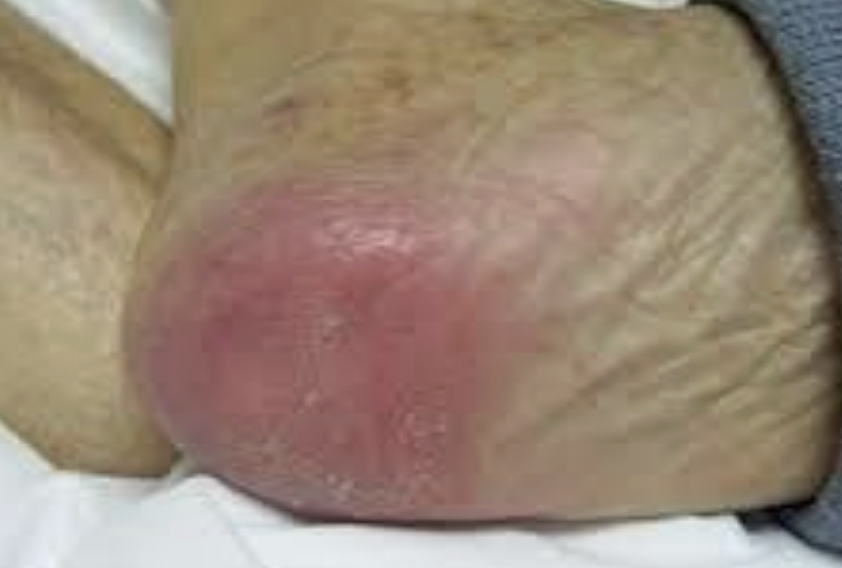
2
pressure injury stage
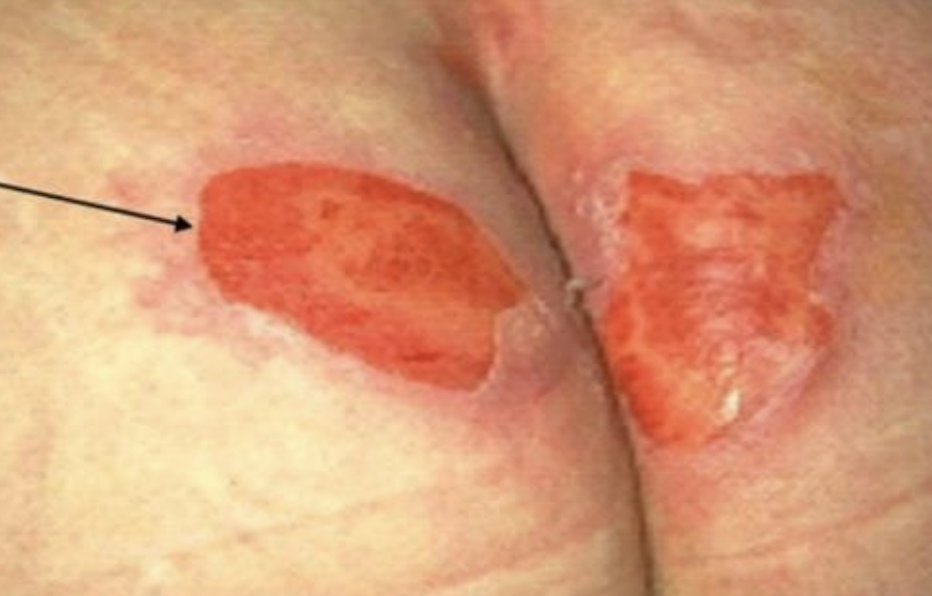
3
pressure injury stage
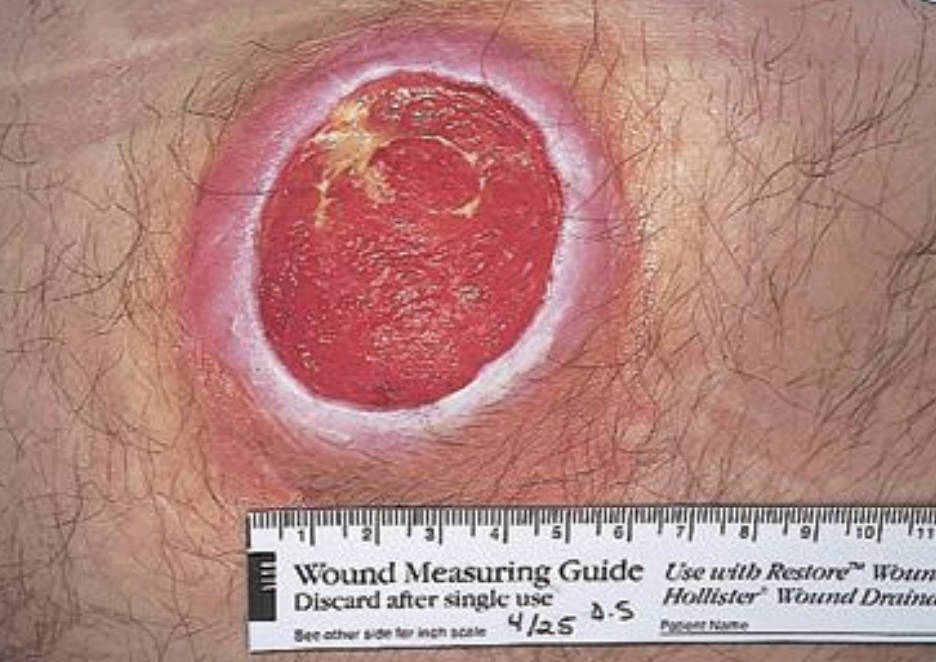
4
pressure injury stage
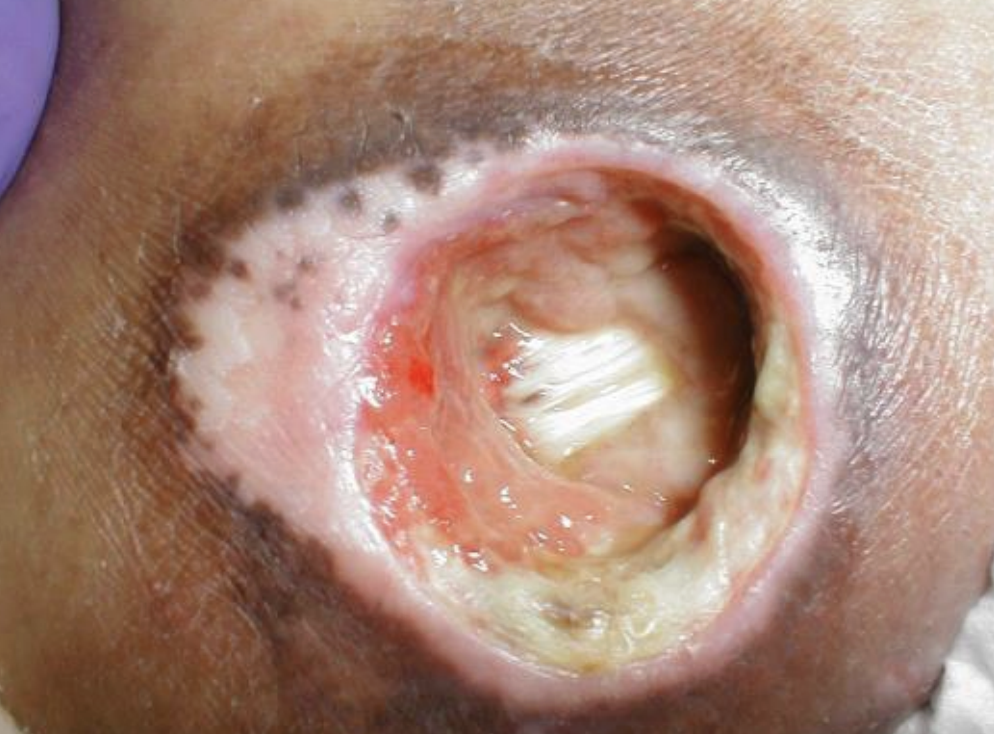
unstageable
pressure injury stage
